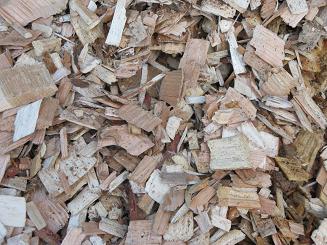Forest management is concerned with activities which fulfill the landowner’s goals and objectives, while at the same time maintaining the productivity of the forest. The management may occur within natural stands or plantations that may be grown under a short rotation.
An important first step in forest management is to define the objectives and long-term goals for the forest. While overall goals need to be developed for the entire forest, they may vary across the ownership due to differences in forest vegetation type or structure, topography, or other considerations. Specific practices for each area, such as regeneration, site preparation, species selection for planting, planting, and silvicultural systems, are designed to regulate the spatial and age structure and species composition of trees.
Consideration of woody biomass should occur after the ownership goals are identified and priorities established. While woody biomass production may facilitate some goals such as fire control through removal of shrubs and small trees or the creation of fuel breaks, reduction of the risk of insects by increasing the health and vigor of the forest, conversion of a site from a low-value to a higher-value species, or management for some wildlife species through the creation of appropriate habitat, it may be unsuitable for other goals.
Because woody biomass is typically a low-value product, economics may dictate what forest management is feasible. Even where the direct costs of the operation are not fully covered by the revenues generated, biomass utilization can reduce overall costs of forest management and reduce other risks, such as from fire, or provide other benefits (e.g., enhanced recreation access, improved wildlife habitat). The overall economics of woody biomass harvesting should be evaluated in view of its long-term impact on the forest. Damage to residual trees and the soil must be avoided to maintain the productivity of the forest.
The following main stand condition classes can be distinguished in relation to bioenergy potential:
- Naturally managed hardwood or softwood forests with high-value timber where harvesting residues and low-value trees are possible sources of bioenergy.
- Stands where biomass harvesting can assist other goals such as timber stand improvement; reduction of hazard and risk from fire, insects, or disease; improving amenity; or wildlife habitat.
- Degraded, low-value forests that could be utilized for bioenergy as part of the process of improving the stands or replacing them with plantations.
- Industrial plantations grown for timber or fiber and where harvesting residues and thinned trees, currently left in the woods to rot, are utilized for bioenergy.
- Short-rotation hardwoods or combinations of trees with other bioenergy-specific crops that are grown primarily as a source of energy.
